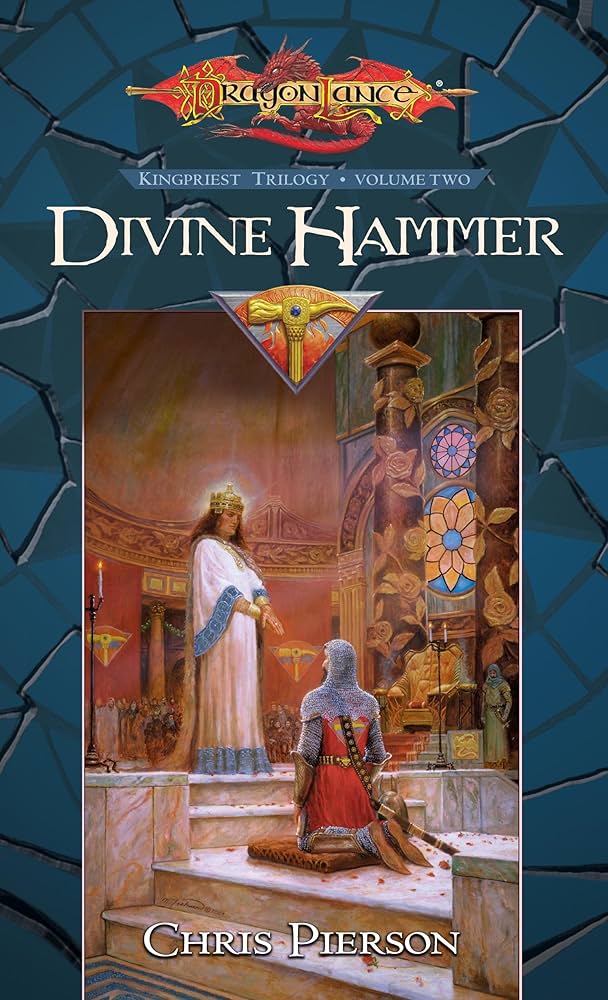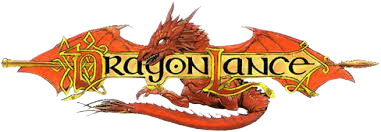Divine Hammer

Table of Contents
ToggleOverview
Divine Hammer, written by Chris Pierson, is the second novel in the Kingpriest trilogy of the Dragonlance saga. Continuing the tragic arc of Beldinas Pilofiro, now fully established as the Kingpriest of Istar, this novel explores the consolidation of his theocratic rule and the formation of the Divine Hammer—his personal military force dedicated to rooting out heresy and sin.
A powerful blend of political drama, military expansion, and spiritual descent, Divine Hammer examines the cost of blind righteousness and the devastating power of faith weaponized.
Main Characters
Beldinas Pilofiro (The Kingpriest) – Once a humble cleric, now transformed into a near-divine ruler. Beldinas becomes increasingly authoritarian as he attempts to build a kingdom of pure virtue, no matter the cost.
Cathan MarSevrin – A general and former confidant of Beldinas, now leading the Divine Hammer. He is torn between duty and his growing discomfort with the Kingpriest’s vision.
Loralon – A powerful elf mystic who represents an alternative spiritual path and becomes a symbol of dissent.
Toren – A high-ranking priest and political manipulator, working both in support of and against the Kingpriest, depending on what benefits the Church.
Setting
Set in Istar and its expanding sphere of influence, the story moves from temple courts to battlefield encampments. The once-glorious city is now a hub of purification, where fear and fervor coexist.
The Divine Hammer marches across Ansalon, spreading the Kingpriest’s gospel—by force if necessary—leaving behind conquered cities and shattered lives.
Plot Summary
The Kingpriest’s rule tightens as he launches the Divine Hammer, a holy army meant to purify the land and bring all of Ansalon under the banner of righteousness. Cathan is appointed to lead it, despite his reservations.
As the Divine Hammer expands its campaigns, resistance grows—both from external enemies and within the ranks. Cathan becomes increasingly disturbed by the brutality justified in Paladine’s name.
Meanwhile, dissenters like Loralon begin to gather quiet support, warning of doom if the Kingpriest continues unchecked. Political scheming intensifies in Istar, where even supporters begin to question their place in the new order.
By the end of the novel, cracks have widened in both the faith and friendship that held the kingdom together. Cathan, once loyal, is now uncertain whether the Kingpriest is truly guided by divine will—or by delusion.
Themes
Fanaticism and Faith – The novel dissects how belief, when taken to extremes, becomes indistinguishable from tyranny.
Duty vs. Conscience – Cathan’s internal struggle reflects the broader question: When does loyalty become complicity?
The Use of Force in the Name of Good – The Divine Hammer serves as both literal and symbolic commentary on holy wars.
The Silencing of Dissent – Dissenting voices are persecuted, highlighting the danger of monolithic spiritual authority.
Tone & Style
Divine Hammer is darker, more urgent, and more tragic than its predecessor. The prose is dense with political maneuvering, battlefield tension, and spiritual introspection.
The tone is that of an empire at its peak—but with shadows deepening beneath the surface.
Reception
Praised for:
Continuing Beldinas’s descent with nuance and gravity.
Thought-provoking religious and ethical themes.
Blending political thriller with epic fantasy.
Some critiques:
Less action-heavy than some Dragonlance fans expect.
Dense religious overtones may feel heavy-handed to some.
Final Thoughts
Divine Hammer is a sobering, eloquent meditation on how the best of intentions can spiral into oppression. As the Kingpriest’s light grows brighter, the shadows he casts deepen—setting the stage for the inevitable fall.
Recommended for:
Readers drawn to morally complex characters and themes.
Fans of historical-style fantasy and spiritual politics.
Dragonlance readers invested in the origins of the Cataclysm and the Age of Might.
